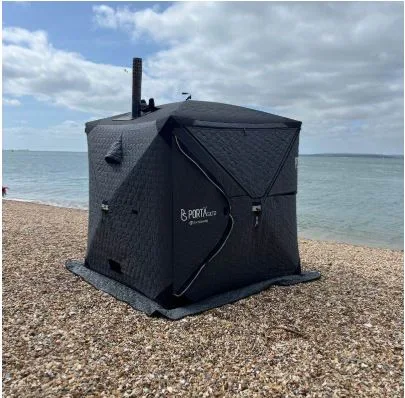A Sauna and Recovery Routine for Athletes
Training applies stress so the body can adapt. Recovery is where that adaptation happens. A well timed sauna routine can help athletes unwind, protect sleep, and make heavy blocks more sustainable. The aim is not to grit your teeth in extreme heat. It is to use heat as a small, repeatable signal that the hard work is over.
Principles that guide the plan
- Keep heat after training rather than before key sessions or races.
- Start mild and progress gradually.
- Hydrate and refuel. Heat does not replace carbohydrates, protein, and water.
- Sleep wins. If evening heat makes you alert, move it earlier.
A practical weekly template
You do not need daily sauna access. Three touch points each week cover most needs, and you can adjust by feel.
Day 1: Hard session followed by short heat
Forty five to ninety minutes after intervals or strength work, sit for ten to fifteen minutes. Step out for fresh air or a short cool rinse of thirty to sixty seconds. Repeat once. This helps you downshift and reduces the urge to keep pushing when recovery is the priority.
Day 2: Easy day with optional maintenance heat
One round of eight to twelve minutes, then cool. Skip this if you feel drained. The point is consistency that supports the main work, not extra stress.
Day 3: Long session followed by an evening wind down
Two or three rounds of ten to fifteen minutes with longer rests outside, lots of water, and no screens. If sleep improves, keep this session. If it leaves you too alert, move it earlier next time.
If you enjoy contrast therapy, add a brief cold plunge or hose cool after each heat round. Build gradually and keep the cool refreshing rather than heroic.
For athletes who want at-home heat and cold without a building project, portable wood fired setups fit neatly alongside a garage gym or patio. Explore options here at PortaSauna. To add cold without fuss, the PortaPlunge collection pairs with any sauna for quick contrast sessions.
How hot and how long
Choose a temperature where conversation is easy. Do not chase the highest number. Many athletes find shorter, gentler rounds work better after intense work, with slightly warmer or longer rounds saved for easy days. Track your own response in a training log so you can spot what supports your readiness scores, resting heart rate, or subjective freshness.
Where it fits in training cycles
Heavy blocks
Use the three day pattern and drop the optional Day 2 heat if you feel low on energy. Focus on bedtime sessions that support sleep.
Heat acclimation blocks
Some endurance athletes add short daily heat exposures for one to two weeks in the build up to hot races. Keep these post-exercise, ensure hydration is on point, and stop if sleep or training quality falls.
Taper and race week
Reduce duration and frequency. Keep one relaxed session early in the week and avoid heavy heat close to the event. Travel days are better served by light mobility, short walks, and early nights.
Hydration, minerals, and fuelling
Bring water to every session. After longer heat, include a pinch of salt in your glass or choose an electrolyte mix you tolerate well. If you track body mass, replace one and a half times the fluid you have lost over the next few hours. Eat familiar carbohydrates and protein after sessions that follow hard training. Heat is complementary to recovery nutrition, not a substitute.
Team culture or solo time
Both work. Teams often use sauna as a screen free space to connect and reset after training camps or matches. Solo sessions help you decompress without small talk. If you share a sauna, agree a no-phone rule and a simple hand signal for stepping out so the flow stays calm.
Practical notes for wood fired setups
Use seasoned hardwood, keep safe clearances around the stove, and crack a vent for fresh air. Place the setup close to the house so weeknight use is realistic. Keep a metal ash bucket with a lid and let embers cool fully before disposal.
Recovery should feel like relief, not more work. Build a routine around your training, protect sleep, and keep the heat gentle. With a little structure, a sauna tent becomes one of the easiest wins in an athlete’s arsenal.





